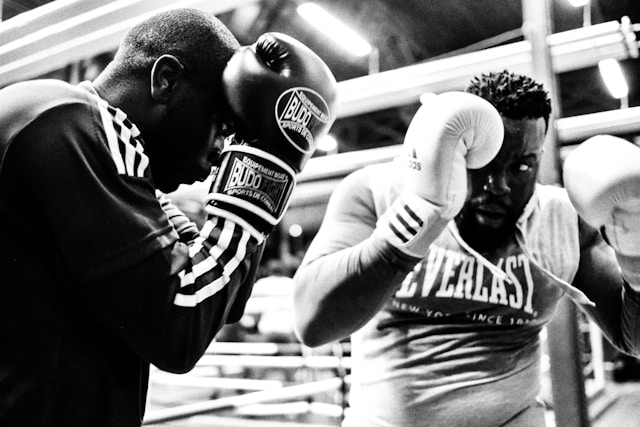Ever watched a game and wondered, “Was it sheer athleticism or some brilliant strategy that clinched the win?” It’s a question that’s plagued athletes, coaches, and fans for ages. Is it enough to be the strongest, fastest, or most enduring? Or does outsmarting your opponent hold the real key to victory? Let’s untangle this fascinating debate: physical fitness versus tactics.
The Foundation: Physical Fitness
Let’s be real – you can’t build a skyscraper on a shaky foundation. Physical fitness is that foundation. It’s the raw material, the engine that powers any athlete. Think of it as your body’s report card covering:
- Strength: The ability to exert force against resistance. Think powerlifters, sure, but also the offensive lineman holding back a defender.
- Endurance: The capacity to sustain physical activity for an extended period. Marathon runners are the poster children, but endurance is also critical for a soccer player sprinting in the 90th minute.
- Speed: The ability to move quickly across the ground or move limbs rapidly. We’re talking Usain Bolt territory here, but also the quick hands of a boxer.
- Flexibility: The range of motion around a joint. A gymnast needs it, but so does a baseball pitcher to prevent injury.
- Agility: The ability to change direction quickly and efficiently. Imagine a basketball player dribbling through defenders.
- Power: The ability to exert maximal force in as short a time as possible. Think of a baseball batter hitting a home run.
- Cardiovascular Endurance: The efficiency with which the body delivers oxygen and nutrients to working muscles.
Without a solid base of physical fitness, even the most brilliant tactics can fall flat. Imagine a chess player with the strategic mind of a grandmaster, but who is so out of shape that they can’t sit through a 4 hour tournament game without losing focus. Sounds absurd, right?
Case Study: Michael Jordan
Michael Jordan wasn’t *just* gifted. His insane work ethic transformed his natural talent into legendary physical prowess. Relentless training honed his vertical leap, speed, and endurance. This foundation allowed him to execute complex plays and dominate opponents, regardless of their defensive tactics. His fitness became a weapon in itself.
The Mind Game: Tactics and Strategy
Okay, so you’re a physical beast. Now what? Tactics are the specific actions and maneuvers you use to gain an advantage over your opponent. Strategy is the overall plan, the blueprint for achieving your goal. Think of tactics as the individual brushstrokes, and strategy as the finished painting.
Tactics can involve:
- Offensive plays: Designed to score or gain ground.
- Defensive formations: Aimed at preventing the opponent from scoring.
- Set pieces: Pre-planned routines, like a corner kick in soccer.
- Counter-attacks: Exploiting an opponent’s mistakes.
Strategy considers:
- Opponent analysis: Identifying their strengths and weaknesses.
- Game plan: A detailed roadmap for achieving victory.
- Risk assessment: Weighing the potential rewards and consequences of different actions.
- Adaptation: Adjusting your approach based on changing circumstances.
Here’s where it gets interesting. Tactics can often overcome a physical disadvantage. Think of David versus Goliath. David wasn’t stronger, but his tactical use of the sling allowed him to defeat a physically superior opponent.
Formula for Success?
Can we boil this down to a simple equation? Maybe something like this:
Performance = (Physical Fitness + Tactical Acumen) * Mental Fortitude
Why mental fortitude? Because even the best-laid plans can crumble under pressure without the mental resilience to stay focused, adapt, and execute.
Examples Across Different Sports
Let’s look at some examples of how physical fitness and tactics play out in different sports:
Soccer
| Aspect | Physical Fitness | Tactics |
|---|---|---|
| Importance | High. Players need endurance, speed, and agility. | Critical. Team formations, passing strategies, and set-piece plays are vital. |
| Example | A midfielder with high cardiovascular fitness can cover more ground and contribute both offensively and defensively throughout the game. | A team employing a high-press tactic to win the ball back in the opponent’s half. |
Basketball
| Aspect | Physical Fitness | Tactics |
|---|---|---|
| Importance | High. Requires explosive power, agility, and endurance for constant movement. | Essential. Offensive plays, defensive strategies, and player matchups significantly impact the game. |
| Example | A player with great vertical jump and speed can drive to the basket effectively and play tough defense. | Using a zone defense to disrupt the opponent’s offensive flow and force turnovers. |
Chess
| Aspect | Physical Fitness | Tactics |
|---|---|---|
| Importance | Moderate. Endurance for long matches and mental stamina. | Extremely High. Strategic planning, pattern recognition, and calculating moves are paramount. |
| Example | Maintaining focus and concentration throughout a 4-hour match requires good physical and mental stamina. | Executing a series of calculated sacrifices to gain a positional advantage and checkmate the opponent. |
The Balancing Act: Finding the Sweet Spot
So, which is more important? The truth is, it’s not an either/or situation. It’s about finding the right balance. The ideal balance depends on the sport, the individual athlete, and even the specific situation within a competition.
Sometimes, raw physical power can overwhelm tactical finesse. Other times, a clever strategy can dismantle a physically superior opponent. The best athletes and teams are those who can seamlessly integrate both elements.
The Role of Coaching
Coaches play a crucial role in developing both physical fitness and tactical acumen. They design training programs to enhance physical capabilities and devise strategies to exploit weaknesses. A good coach understands the importance of both elements and knows how to integrate them effectively. They also help athletes develop the mental fortitude to perform under pressure.
Adaptability: The Ultimate Competitive Advantage
Here’s a curveball: the ability to adapt is arguably the most critical factor. A team might have a killer strategy going into a game, but if they can’t adjust when things go sideways, they’re doomed. Adaptability requires:
- Reading the game: Understanding the flow and momentum.
- Identifying weaknesses: Spotting vulnerabilities in your opponent’s strategy or execution.
- Making adjustments: Changing your tactics on the fly to exploit those weaknesses.
- Maintaining composure: Staying calm and focused under pressure.
Real-World Examples and Statistics
Consider the famous “Miracle on Ice” at the 1980 Winter Olympics. The underdog US hockey team, comprised of college players and amateurs, defeated the seemingly invincible Soviet team, who were seasoned professionals. While the US team trained rigorously, their tactical approach of aggressive forechecking and capitalizing on turnovers, combined with unwavering determination, allowed them to upset a physically superior opponent.
A study published in the “Journal of Sports Sciences” examined the impact of tactical training on soccer performance. The results indicated that teams with a higher focus on tactical drills and strategic planning demonstrated improved game outcomes, even when physical fitness levels were comparable to their competitors.
The Future of Competition
As sports science advances, our understanding of physical fitness and tactics will continue to evolve. Technology plays an increasing role, with data analytics providing deeper insights into player performance and opponent strategies. Virtual reality and simulations allow athletes to refine their tactical decision-making in realistic environments.
The future of competition will likely see an even greater integration of physical fitness and tactical intelligence, leading to more sophisticated and dynamic performances. Athletes who can combine exceptional physical abilities with keen tactical awareness and mental fortitude will be best positioned to achieve sustained success.
Conclusion: The Champion Within
So, what decides the outcome of a competition? There’s no single answer. It’s a complex interplay of physical fitness, tactical brilliance, mental toughness, and the ability to adapt. It’s about harnessing your strengths, exploiting your opponent’s weaknesses, and executing your game plan with precision and determination. It’s about cultivating the champion within.
FAQ: Your Burning Questions Answered
Q: Is physical fitness more important in some sports than others?
A: Absolutely. In sports like marathon running or swimming, physical endurance is paramount. In sports like weightlifting, brute strength is key. But even in these sports, tactical elements like pacing and technique play a crucial role.
Q: Can tactics really overcome a significant physical disadvantage?
A: Yes, absolutely! Think of it like this: a smaller, weaker martial artist can defeat a larger, stronger opponent by using leverage, technique, and exploiting their weaknesses. It’s about being smarter, not just stronger.
Q: How can I improve my tactical skills?
A: Study the game! Watch professionals, analyze their strategies, and try to understand why they make certain decisions. Practice different scenarios and experiment with different tactics. And most importantly, get feedback from experienced coaches or mentors.
Q: What role does mental preparation play in competition?
A: Mental preparation is HUGE! Visualization, positive self-talk, and stress management techniques can help you stay focused, confident, and resilient under pressure. A strong mind can often overcome physical limitations.
Q: How do coaches balance physical training with tactical development?
A: Great coaches integrate physical and tactical training. They design drills that not only improve physical abilities but also reinforce tactical concepts. They also provide athletes with opportunities to apply their tactical knowledge in game-like situations.

